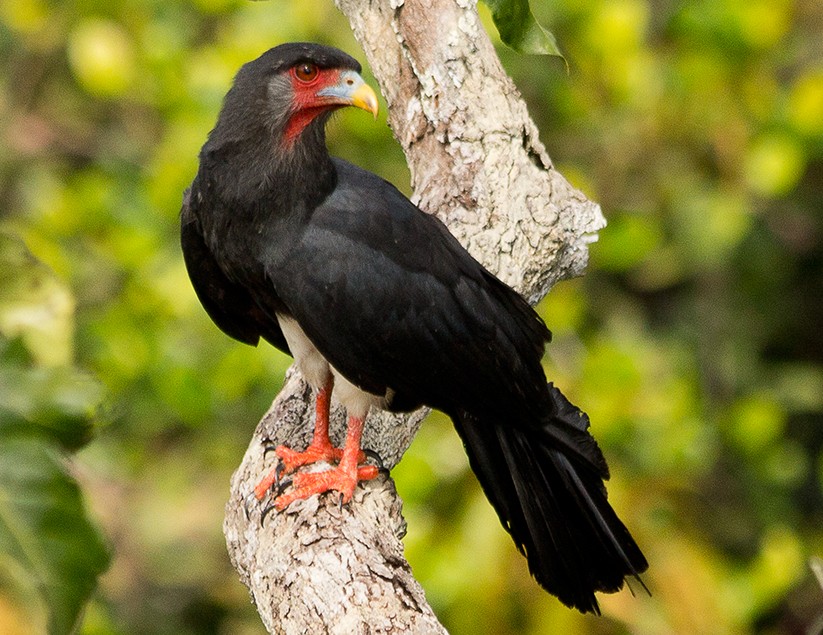Red-throated Caracara
A species of Red-throated Caracara Scientific name : Ibycter americanus Genus : Red-throated Caracara
Red-throated Caracara, A species of Red-throated Caracara
Botanical name: Ibycter americanus
Genus: Red-throated Caracara
Content
Description General Info
 Photo By Sean McCann , used under CC-BY-SA-3.0 /Cropped and compressed from original
Photo By Sean McCann , used under CC-BY-SA-3.0 /Cropped and compressed from original Description
Males average 20.1 in (51 cm) long, while females average 22.1 in (56 cm); they are distinguished from the black caracara by larger size and plumage that is mainly black, with the belly, tail feathers, and undertail feathers being white. Both their faces and throats are bare with a few black feathers scattered on the throat; the exposed skin is red. Both male and female red-throated caracaras are similar in appearance. Males have a wing length of 35.55 cm, a tail length of 24.96 cm, a bill length of 2.5 cm, and a tarsus length of 5.41 cm. Females have a wing length of 35.93 cm, a tail length of 25.31 cm, a bill length of 2.58 cm, and a tarsus length of 5.62 cm. 
Size
61 cm
Nest Placement
Cavity
Feeding Habits
Red-throated Caracara's diet primarily consists of wasps, bees, and other social insects such as ants and termites. It forages for small invertebrates and lizards too, occasionally consuming fruits. Its specialized feeding behavior includes raiding nests directly, a unique adaptation among raptors.
Habitat
The typical habitat for red-throated Caracara spans humid lowland evergreen forests across broader tropical regions. These birds favor the understory of mature forests with sparse vegetation, which facilitates their deliberate flight patterns and offers clear visibility for foraging, notably targeting insect nests while vigilantly monitoring for potential predators.
Dite type
Carnivorous
General Info
Feeding Habits
Bird food type
Distribution Area
This species inhabits the humid lowland forests of Bolivia, Brazil, Colombia, Costa Rica, El Salvador, Ecuador, French Guiana, Guatemala, Guyana, Honduras, Mexico, Nicaragua, Panama, Peru, and Venezuela. The slow flight of the red-throated caracara makes it suited it to fly in the understory of the forest where the vegetation is thin. The sparse vegetation gives the red-throated caracara greater visibility to spot food and predators. The ornate hawk-eagle and the black-and-white hawk-eagle are predators of the red-throated caracara. 
Species Status
Not globally threatened.
Scientific Classification
Phylum
Chordates Class
Birds Order
Diurnal Birds of Prey Family
Falcons and caracaras Genus
Red-throated Caracara Species
Red-throated Caracara